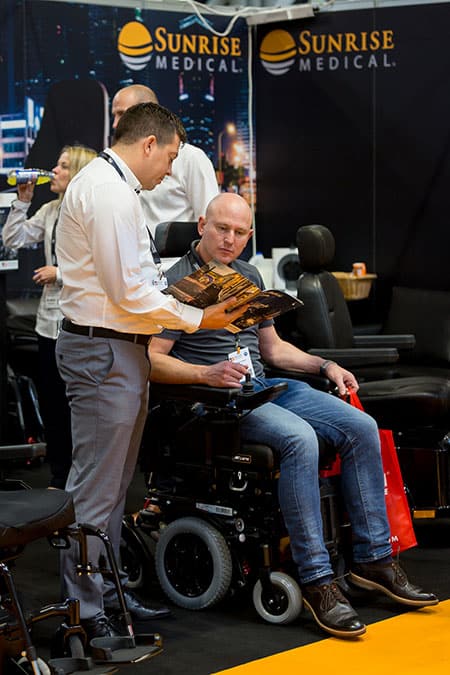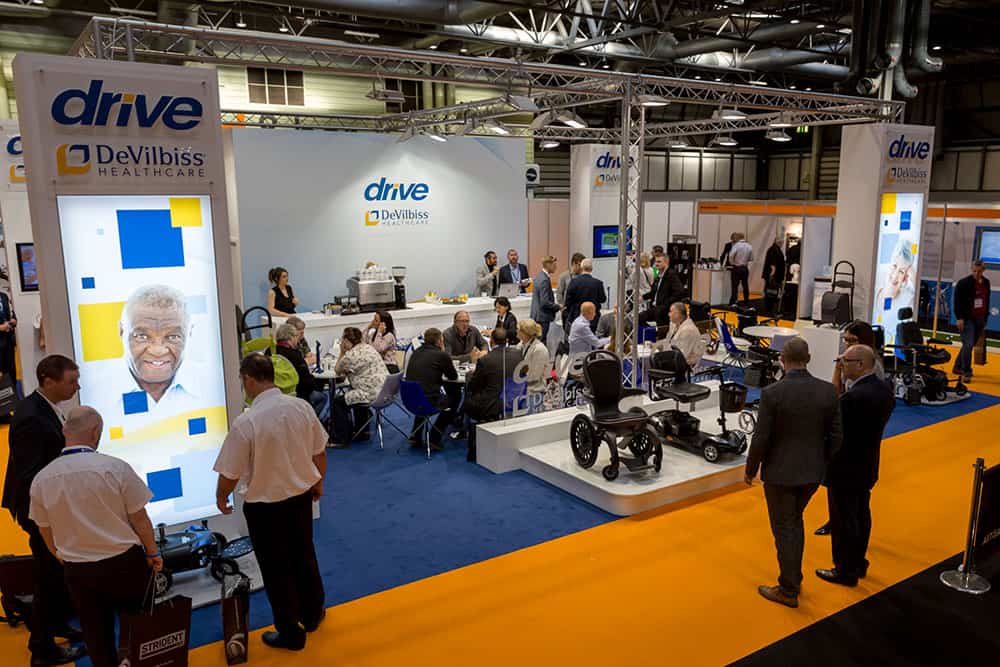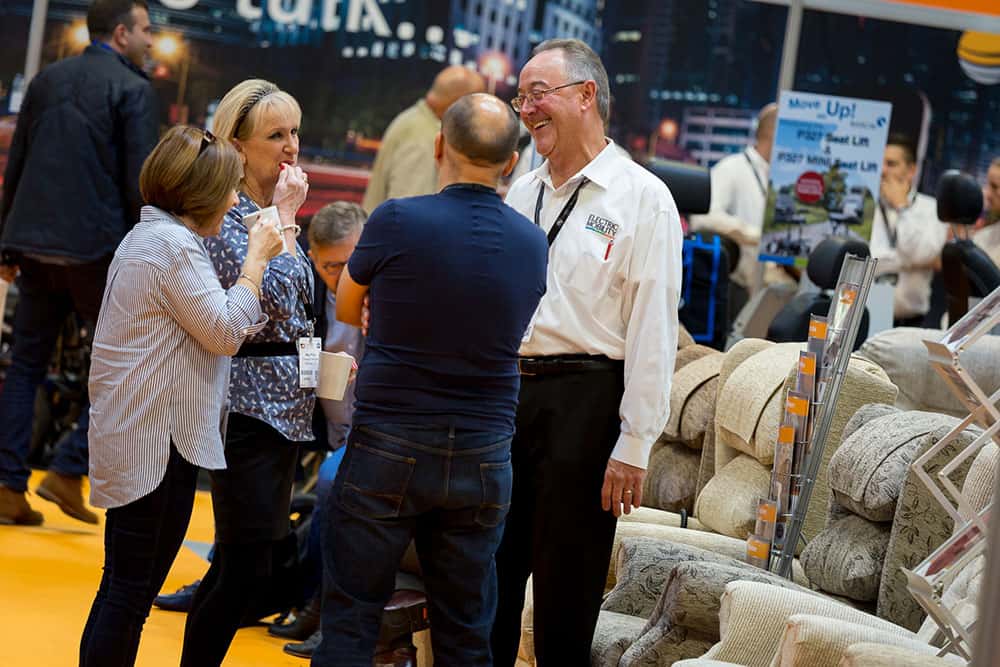Marketing knowledge: How to make the most out of your stand at Trade Days
With Trade Days coming up next month, exhibitors are getting ready to present their new products and services, meet new and existing clients, make an impact on the people they want to reach out to and, most of all, make sales. THIIS caught up with Carmela Coop-Rodia, Group Show Manager at CloserStill Media, to get her insights on what makes a good stand, the importance of making an effort, stand sizes, demonstrations and much more.
Clear, simple messaging
Making the most of a stand is imperative for companies at exhibitions because if it can attract visitors, attention and sales.
It is the shop window for many brands and as such, should be a clear, precise and memorable glimpse into what that brand is all about.
According to Carmela, one of the most important elements in creating an outstanding stand is delivering a clear, concise message to the audience
It can be about a product or service, but showcasing what your company is trying to get across is critical points out the exhibition expert, as some people are shy or don’t want to get bombarded with sales conversations unless it’s something they’re truly interested in.
“People are looking to see if this product is relevant to me? Is this service relevant to me? And then they’ll want to find out more,” said Carmela.
“Therefore, if it’s really easy to identify what it is that your company does, what you’ve got to offer and why somebody should come to you, then people will know whether to visit or not.”
If it’s not always apparent what the company is about or what they have to offer, there is more of a chance of people just walking by.
Make an effort
Putting effort into your stand is important stresses Carmela, else exhibitors run the risk of it reflecting negatively on their businesses. If it looks like a business is not making an effort, it leaves attendees wondering why they should make an effort with them.
“A lot of companies don’t do anything; they may leave the back walls empty or just stick up a couple of little notices but you’ve got to be thinking about how that will reflect on your business,” remarked the show manager.
For exhibitors, it is vital that their stands represent their brands and where they want to be positioned in the market. Importantly, Carmela emphasised that it doesn’t have to be the biggest stand, but if a real effort is made, visitors will appreciate it.
“You don’t have to go for the run-of-the-mill exhibition stuff, you can get some cool furniture from IKEA and use it for display purposes.” Carmela Coop-Rodia
Is bigger better?
It’s less about stand size and more about choosing the appropriate size for the objective the company wants to achieve at an event says Carmela.
“You can take a great big stand but unless you’re utilising it properly, it looks ridiculous, which can have a negative impact. Choosing the right size for what your activity is matters,” she explained.
“If your stand is too small and you cram tonnes and tonnes of product on there, that’s also negative.”
However, having a small stand can be far more inviting if companies just have a single product or service offering, rather than overly large, daunting space, giving visitors the opportunity to have more intimate discussions.
Budget
Highlighting another key factor in choosing a stand size is considering a company’s budget explains Carmela; affording the biggest stand possible to meet a brand’s objectives.
“For example, if I’m a consultant selling some software, I’m not going to necessarily need a 100 sq. metre stand because what am I actually going to do with that?” she stated.
Audience size
How many people are visiting a particular show is also a crucial factor in deciding what stand size is best for a company.
“If 50,000 people are expected at an exhibition, then that’s potentially a lot of people that could visit your stand at any given time,” continued Carmela.
“In this case, you’re probably going to have a big stand to allow visitors to come and visit you, with 30 reps sitting around tables to really utilise that space.”
Speak to the show organiser
To get creative and really make the most out of an exhibition, Carmela recommends speaking to the show organiser, who can provide lots of tips, information and knowledge about how to make an impact, regardless of whether the stand is big or small.
“There’s a whole host of different equipment that people can order through the exhibition organisers’ suppliers,” she suggests.
“The show’s marketing team is always on hand to help with your pre-show promotion; they offer product exhibition tool kits that include buttons, banners and personalised invites which you can use in your pre-show marketing to guarantee your time at the show is a success.”
Exhibition organisers can also help tailor a company’s stand to achieve its objectives and provide some really insightful ideas.
“People like a bit of theatre and are drawn to crowds, so if you can create a crowd at your stand, people will naturally come over” Carmela Coop-Rodia
Consider IKEA
One place which can provide some great display solutions, especially for people on a budget, is IKEA proposes Carmela; a place which not everyone considers.
“You don’t have to go for the run-of-the-mill exhibition stuff, you can get some cool furniture from IKEA and use it for display purposes, that can work really well.”
Put yourself in the visitor’s shoes

“Have friendly people on your stand with good graphics; display a clear message with key products showcased at the front; and make sure there’s enough room for people to come onto the stand without overfilling the space,” she summed up.
Demonstrations and presentations
Considering the exhibition experience as a whole, demonstrations and education are vital to visitors.
“They want to find out about the products and services that you have to offer otherwise they wouldn’t be visiting your stand. Think about what your prospective buyer would want to know about your products,” added Carmela.
“As a customer, I’m asking myself: Why would I want this product or service? Where does it sit in the marketplace? How’s it going to help my business? They’re the kind of things I want to know.
“People like a bit of theatre and are drawn to crowds, so if you can create a crowd at your stand, people will naturally come over to find out what your company is doing because they’re curious.
“I know some companies will do demonstrations or education sessions on the stand that are timetabled. I know some stands build mini theatres on there. It’s an extra dimension to your stand.”
What sort of stands stand out the most?
Having attended more shows than she can remember, Carmela discussed what stands have really stood out to her over the years.
“A lot of companies invest so much money into an actual event space but don’t do any marketing around it and that is where companies always fall short.” Carmela Coop-Rodia
“For me, the best stands are the ones which have a really clear message, they’ve got the appropriate amount of space to showcase what they’ve set out to achieve, and they’re inviting stands.
“I don’t feel scared about going on there, I feel like I can go on that stand without getting jumped on by a salesperson. I can see that this is something that I want to find out more about and it’s a space to talk business.”
Don’t forget… the importance of a pre-show marketing campaign
When it comes to exhibitions, the age-old adage of ‘fail to prepare, prepare to fail’ certainly rings true. For business to maximise the effectiveness of their stands, Carmela underlines that it is essential that businesses also promote themselves before an event.
“You can have the best stand since sliced bread but the build-up to the event is equally as important because if you’re not talking about what your company is going to be doing, then you’re just relying on people walking around and seeing you,” she explained.
“A lot of companies invest so much money into an actual event space but don’t do any marketing around it and that is where companies always fall short.
“The difference between a good show and an amazing show comes down to the pre-show marketing campaign.”
According to Carmela, putting in the ground work can pay dividends for companies.
This can be using their marketing campaign to promote what they’re going to be doing at the show and inviting people to visit them prior to the event or promoting initiatives such as competitions or a free lunch.
“Whatever you decide to do with your stand, you need to be incorporating it into your pre-show marketing campaign,” she added.
Interested in exhibiting at Trade Days on the 7th-8th October? Contact Carmela on c.coop-rodia@closerstillmedia.com or call 020 7013 4975
www.tradedays.co.uk
Carmela’s top pre-show marketing tips
Contact people
Companies should utilise their database and contact people, highlighting what event they’re exhibiting at, what they’re going to be doing there and what stand they will be at.
“Every company has people that they’d love to go and see but can’t, so inviting them down to an event where it’s going to have a benefit to the visitor, or their potential target, is a good thing to do.”
External publications
“Companies need to make use of external publications, such as THIIS, to push out any new launches that will be at a particular show.”
People also should get in contact with industry press with their press releases to promote that they’re going to be at a particular show, such as Trade Days.
The show’s own marketing campaign
How can you get involved with the show’s marketing campaign?
“Speak to the organiser, give the organiser press releases or industry news that relates to your time there and they’ll often run it.”
You can also ask them if there’s any additional sponsorship you can do at an event to get the edge on your competitors and stand out.
Define your objectives
Have some clear objectives before the event.
“Often people will book a stand, they won’t market themselves before the show, and they won’t follow up; they don’t know really why they’re there.
“So, have some clear objectives: What are you there to do? Are you there to make some orders? Are you there to meet new customers? Are you there to meet with existing customers? Are you there to do a new launch? Think about those things before the event.”
Other things to look out for
- Update your exhibitor profile on the show website
- Make sure you have the correct listing in the show guide
- Use social media
- Set up meetings before the show
- Invite your prospects along to the event






